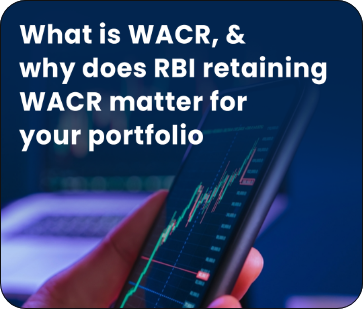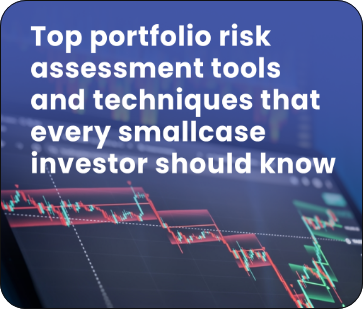
The rise of India's defence sector: from importing to 'Make in India'
So imagine this! In 2015, if India needed fighter jets, it had to raise its hand on the global stage and wait, sometimes even for years, to get deliveries.
Now, flash forward to 2025. The Tejas Mark II soars from HAL's hangar, and indigenously built artillery systems roll off Indian factory floors.
Also, India's defence exports touched ₹23,622 crore in FY25.
It is indeed a new era! India's transformation from being one of the world's biggest arms importers to a self-reliant defence powerhouse.
This isn't just a victory lap for national pride, it's a massive opportunity for investors. With policy tailwinds, cutting-edge tech, and private players galore, the defence sector is no longer a black box.
It's an evolving narrative of innovation, scale, and profits waiting to be tapped.
In this article, we break down how we got here, the hurdles that remain, and how investors can identify potential opportunities in this.
Table Of Contents:
A brief overview of India's defence sector
First, the basics.
India has historically spent big on defence, ranking among the top five global military spenders.
Yet, nearly 60% of its military equipment was once imported, often at high cost and with long lead times. That's changing fast.
With the launch of the 'Atmanirbhar Bharat' (Self-Reliant India) mission, the government has placed the defence sector at the core of its indigenous manufacturing push.
Defence Public Sector Undertakings (DPSUs) have been restructured, private players have been given bigger roles, and the cap on FDI in defence manufacturing has been raised to 74% under the automatic route.
And if you need a single number to remember, remember this! India exported over ₹21,000 crore worth of defence equipment in FY24, a massive 32x increase over the last decade.
Key milestones in India's defence evolution
India's journey to defence self-reliance didn't happen overnight. These milestones show the trajectory:
2016: DPP revamp with priority to IDDM
So what changed? The Defence Procurement Policy (DPP) revamped procurement, and IDDM (Indigenously Designed, Developed, and Manufactured) became the top priority.
Foreign suppliers now had to think twice. To stay in India, they needed local partnerships or to set up manufacturing units.
2018–2020: Positive indigenisation lists
First List (2018): 108 items, ranging from optics to communication chips, were banned for import.
Latest List (2024): Over 500 items must be domestically sourced.
Implication: Every time the list expands, orders shift. MSMEs supply gear ranging from nuts and bolts to tactical radios.
2020: DAP 2020 and e-Procurement
Here's what's changed this year! Defence Acquisition Procedure (DAP) 2020 emphasized e-tendering, transparency, and fast-tracking trials.
The impact was quite significant, too. DAP 2020 introduced e-procurement and faster approvals to streamline acquisitions. Tenders moved online, reducing red tape and "surprise committee" delays.
2021–2024: Private sector surge
Key players: Adani Defence & Aerospace, Tata Advanced Systems, and L&T Defence won big contracts for drones, transport aircraft, and missile systems.
Startups and R&D: DRDO collaborated with iDEX startups on AI-driven surveillance drones and next-gen avionics.
Export boom: Exports rocketed from ₹1,941 crore (FY15) to over ₹21,000 crore (FY24), with buyers in Armenia, the Philippines, and parts of Africa.
So it is quite evident that from dithering in long tenders to accelerating home-grown innovations, India's defence sector is on warp speed.
What can investors do to maximize their possibility of potential for high returns? Well, you can simply choose the best smallcase company whose philosophy is rooted in fundamental research and strategic portfolio management. Such wealth management services give you access to industry experts with decades of experience in providing a research-backed, well-balanced, and systematic approach towards investment.
Top strategic challenges India needs to overcome
Still, it's not all smooth sailing. Scaling a complex, capital-intensive sector like defence comes with its own minefields.
R&D Deficit
Indigenous weapons systems require deep technological R&D, which has historically lagged. Defence R&D spend is 0.66% of GDP, which is quite modest compared to other countries.
Export competitiveness
Competing with established players like the US, France, and Russia in global arms markets requires not just products but diplomacy, delivery, and trust.
Private sector constraints
While private defence players are rising fast, they still face bottlenecks, especially in receiving large-scale defence contracts and navigating regulatory approvals.
Supply chain maturity
Building high-end systems needs deep and wide supply chains. Many of India's MSMEs are still catching up on capabilities and compliance.
How can investors identify potential opportunities in this?
Think beyond the big names.
Sure, HAL and Bharat Electronics Limited (BEL) are household names. But they often operate under cost-plus contracts with thin margins. Instead, consider:
Private Defence Play
Companies like Bharat Dynamics Limited (BDL), VEM Tech, or Agnigen Defence & Aerospace. They focus on missiles, surveillance systems, or avionics, often as Tier-1 or Tier-2 suppliers to larger integrators.
Defence-Adjacent Suppliers
Look for specialized players in advanced materials, semiconductors, or precision machining. When HAL needs a composite fuselage for Tejas Mark II, someone supplies the raw carbon fabrics.
Follow the indigenisation roadmap
Every time the MoD drops a new Positive Indigenisation List, it's a signal for opportunity.
If a subcomponent or subsystem shifts from "imported only" to "must be made in India," investors should research who's likely to bid on that contract.
You need to keep a watch on:
- Notification Dates: Check the MoD's website for list updates.
- Vendor Licenses: Firms with recent DGCA (Directorate General of Civil Aviation) or MoD certifications are often first to snag new projects.
- R&D Partnerships: Companies collaborating with DRDO or iDEX startups usually get a first-mover advantage.
Choosing thematic smallcase portfolios
For many retail investors, picking individual defence stocks can feel like defusing a bomb blindfolded.
That's where thematic smallcase portfolios come in. Instead of picking one or two names, ride the wave with a basket of well-researched companies.
If you prefer a more balanced strategy, look at portfolios like PINC Classic Compounder Fundamental.
This curated smallcase includes fundamentally strong companies, some with defence exposure, designed to deliver stable compounding over the long run.
These smallcase portfolios let you stay invested in India's growth story without trying to time every policy change.
Watch government tendencies, not just budgets
While headline defence budgets get all the media attention, the capital expenditure (CAPEX) vs. revenue expenditure (RECAPEX) mix is more telling.
When you see a rising CAPEX, the share implies more spending on equipment and manufacturing, translating to higher orders for OEMs and suppliers.
Also watch for:
- Bengaluru defence expos: Annual expos showcase which products are gaining traction.
- MoD press releases: Announcements around trials, contracts, or certifications.
- Global partnerships: Bilateral defence pacts (e.g., India-US, India-France) often pave the way for technology transfer agreements or joint ventures.
Conclusion
India's defence sector is at a pivotal juncture, transitioning from import dependency to becoming a global exporter of defence equipment.
This transformation, driven by policy reforms, technological advancements, and increased private sector participation, offers a compelling narrative for investors.
We at PINC Wealth offer expert-curated smallcase portfolios that align with India's growth story, providing investors with opportunities to participate in sectors like defence, manufacturing, and technology.
Our portfolios are designed to capture long-term structural trends, ensuring that your investments are aligned with the nation's progress. Start your investment journey today!
Related Articles

How will the US Fed rate cut impact inflation, Indian markets and your investment portfolio?
US Fed rate cuts influence Indian markets, currency trends, and smallcase stocks. Explore sectors that benefit, risks, and smart investment strategies for 2025.
Know more
What is WACR, and why does RBI retaining WACR matter for your portfolio?
Understand WACR and RBI's revised liquidity framework. Learn how these monetary policy changes impact your smallcase investment and portfolio returns.
Know more
‘Bite-sized’ smallcase investments: Low entry-cost portfolios for new and young investors
Making investment even easier and simpler with ‘bite-sized’ smallcase portfolios. Here’s a guide for beginners on how to start and build long-term wealth.
Know more
Top portfolio risk assessment tools and techniques that every smallcase investor should know
Learn about the top portfolio risk assessment tools and techniques that every smallcase investor should know to analyse and manage the potential risk, and how financial advisors help in this effectively.
Know moreMeet the people
we served!
PINC Compounder Smallcase has simplified my investment journey. Seriously, investing has never been easy for me! Here in a single click, I could access a balanced portfolio. Thanks PINC.
Mr. Akhilesh
I was hesitant about investing, but PINC Smallcase changed that. Talking to their team and looking at their growth gave me confidence. I've seen my investments grow steadily since then. I'm impressed!
Devendra Palan
As someone with limited knowledge about the stock market, I found Pinc smallcase to be a reliable and accessible platform. Their detailed reports and analysis have given me a deeper understanding of the stocks in my portfolio. I feel confident in managing my investments.
Pratik Gandhi

Subscribe to our email list
Sign up for Expert Insights
Your Gateway to Smarter Wealth
Management!
Looking to grow your wealth with
PINC Smallcase?